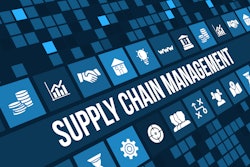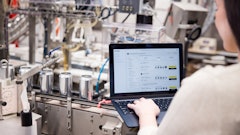
Military simulation battlefield and logistics systems enable commanders to run scenarios and trial numerous different options before a battle is joined. Once engaged, simulations must be able to be built quickly and at scale, accessible in real time, and able to work with incomplete and disrupted data. Despite a hostile environment in which situational awareness is never perfect, commanders can use simulation systems to help accelerate and improve their own decision-making, allowing them to achieve the best outcome in tough situations.
Just as military leaders need to make rapid decisions in less than perfect scenarios, so too must business leaders tackle the challenges presented in their operations. While there are certainly differences between the frontline of a war zone and the warehouse floor, there is a lot that decision-makers could learn for their own supply chains from the military’s ability to complete intensive experimentation. All leaders need to be able to select suitable capabilities and tactics to reliably drive the right outcome even when data is scarce.
Relevance to the warehouse sector – optimization with incomplete data
Across the supply chain sector, automation is gathering pace, fuelled by chronic staffing challenges and escalating requirements to drive greater levels of efficiency and resilience. The global market for warehouse automation is forecast to grow at a compound annual rate of more than 15% to 2029, according to The Business Research Company. This also comes at a time of continuous disruption from changes in tariffs, geopolitical tensions, and ever precarious trade relations. These are just some of the kinds of variables that warehouse operators must be capable of absorbing and overcoming. Today’s supply chains have many potential vulnerabilities, from political and weather events to canal blockages and fuel prices.
While it is true the absolute accuracy of simulation depends on the quality of data, in practice a rapid concept or directional decision at a slightly lower level of fidelity may be infinitely more valuable. There can be a mismatch between the insistence on high-fidelity data on one hand, and the spreadsheets and legacy tools that many warehouse planners and managers still use on the other. The result? Slow decisions and poor choices that undermine efficiency and lead to misplaced investment.
New capabilities for frontline teams without data expertise
Advances in AI and no-code simulation have removed the barriers and changed what is possible. Next-generation simulation digital twin technology provides a dramatic step up in capabilities for warehouse operations leadership. Simulation is no longer restricted to data-analysts and engineers. It delivers a crystal-clear view so people on the ground who know and understand the processes inside-out can make well-informed decisions with confidence, whether redeploying colleagues, making what appear to be small adjustments, or determining the best areas for investing in automation.
Despite having incomplete data, warehouse teams can build models that are close enough to reality to deliver value, especially for higher level operational questions that do not require a highly granular level of fidelity. This accessibility empowers cross-functional teams to make bigger picture strategic decisions, aligning with an organization’s broader long-term strategy. Most operations have sufficient understanding of their business regarding timings, volumes, resource shifts and layout diagrams, even if elements of that picture are estimates.
For those situations where exact process-timings are not recorded, teams can still use realistic assumptions. Through creation of baseline models, these assumptions can be assessed for fit to the known reality. Once presented in a highly visible modeling environment, attributes and data points can be tuned. The models can test for sensitivity to specific attributes, thereby drawing focus to those areas which merit attention for further analysis and consideration.
AI-powered simplification
What makes this possible is AI’s ability to synthesize missing data based on the insights available. For future projections, subsets of the data may be synthesized to create a reasonable representation of a particular flow. In the battlespace, technology has led to more decentralized decision-making and unit autonomy, a concept also valued by CEOs and transformation leaders in warehousing.
The impact is that operations teams distributed around the business, close to the action, are now able to model scenarios directly, using no-code interfaces and platforms that lead users to identify constraints and bottlenecks. The need to extract, structure and validate massive datasets is passing.
Instead, teams can start with basic assumptions, use built-in assistance to check whether those assumptions are sound and iterate right away. The ability to model and test “good enough” scenarios is far more valuable than waiting weeks for high fidelity models that answer narrower but now out of date questions.
The full spectrum – from strategy optimization to process tweaks
Simulation’s versatility means it can be applied across the full spectrum of operational questions, from strategy in the early stages of concept design for a major investment in technology to fine-tuned tweaks of existing facilities. It benefits both warehouse teams and board-level decision-makers by de-risking investments.
For example, at one end, there are strategic decisions where no real-world data exists. That could be, for example, the evaluation of a new fulfillment model or assessing capacity to handle order volumes for a potential new business unit. In these cases, synthetic data and AI generated scenarios help teams model rough forecasts and compare different system designs. Rather than being consumed by the detail, they more fully understand the most probable outcomes under different assumptions.
When it comes to major investments in new technology, warehouses and logistics operators want to plan for greater automation without risking business continuity. Next generation simulation digital twins enable them, for example, to see if an automated robotic picking system can be integrated with storage areas and conveyors to achieve the level of throughput, they need to avoid delays.
Where teams are assessing changes to layout, resources or throughput, AI-powered simulation is particularly effective at providing timely insights using the data that’s already available without relying on technical experts or months of preparation.
In sectors such as pharmaceuticals, a hybrid human-machine system is often preferable for compliance reasons. Simulation technology enables warehouse operators to plan such set-ups step-by-step, cascading into more detail where the analysis reveals greater benefits may be available. Operators can trial different robotics solutions in the digital twin and review how they can work in tandem with humans, either in new or existing processes without risking disruptions in the real-world operation.
AI-assisted simulation is part of the future
Simulation has been around for years, but in the defense sector its impact has taken off in the last decade. In military and commercial settings, improved accessibility has come alongside significant advances in computing power. AI has removed the technical requirements and the time-consuming data-related barriers, so that next generation simulation using digital twins is a technology warehouse teams can use for themselves.
Operators and their employees can run experiments, compare options and understand the likely outcomes whatever their purpose. They could be seeking to maximize the efficiency of current processes, justify costly new robotics, enter new markets or adapt to new client’s demands. One thing is certain, next-generation simulation digital twin technology is now central to strategic decision-making at every level of an organization, enabling much faster and far better decisions and bringing significant gains to the bottom line.




















